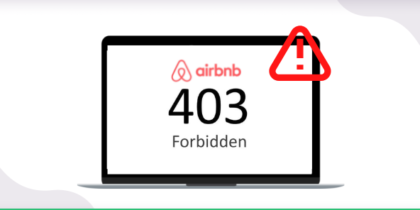Table of Contents
Businesses rely on web applications and APIs to interact with customers to deliver quality services. In order to safeguard all the data that web applications hold, WAAP comes into the picture.
Adam Hils and Jeremy D’Hoinne first introduced Web Applications and API Protection. These are cloud based strategies, technologies and practices that help secure web applications and APIs.
Common threats and attacks for web applications and APIs:

Web applications and APIs are so vulnerable to various threats and attacks. Malicious actors are everywhere, and they try to exploit web applications and APIs to gain access to steal data or disrupt services. Some common threats and attacks can be.
Cross site scripting (XSS)
Hackers and attackers are getting very smart in 2023, and they make use of something called cross site scripting. In this, attackers inject malicious scripts into web applications. These scripts are then executed in browsers that we use.
Unfortunately, if anyone uses the browsers after the injection of XSS, this can lead to the theft of sensitive data or the hijacking of the entire system. One real life example is of British Airways where users were redirected to a fraudulent site.
SQL Injection to hijack database
SQL injections can infect any organization’s entire system and are one of the most potent tools attackers use to gain access to sensitive information.
In this, they inject or insert malicious SQL queries into input fields to exploit vulnerabilities in the application’s database to gain access that is not authorized. The data breach of Yahoo is an example of SQL injection where more than 450000 emails were hacked.
API abuse
API abuse is the worst of all the vulnerabilities, according to IBM security X-force report. It means the malicious exploitation of Application Programming Interfaces. The intention is to compromise a system’s integrity, availability, or security.
In API abuse, the attackers employ various tactics for disruptive or unauthorized activities. One common method involves overloading APIs with an excessive number of requests. This eventually overwhelms the target system’s resources and causes performance degradation or downtime.
For instance (DDoS) attacks specifically target APIs to disrupt business operations.
In the other scenario, attackers steal API keys to authenticate and authorize access to APIs to impersonate internet users to track sensitive data or financial information. The first American Financial Corp Data leak and the Facebook data breach of 2019 are fine examples of API data breaches.
Brute force attacks
Brute force attacks can be extremely dangerous and intelligent at the same time. In a real setting, you can take the example of a burglar trying to get into your house with a set of different keys, hoping that one of them will open the door.
Brute force attacks are the same, where hackers or attackers use a combination of different passwords to get into your system. The intention behind it is to steal your sensitive information or to hijack your entire system. These attacks can be very fruitful for crypto hackers, who manage to steal the key to your cold or hot wallet to access your digital property.
Why are traditional WAFs not Enough?
WAP is a traditional security firewall that protects web applications and APIs. Unlike the WAPP, it lacks the proper defense system that can provide the ultimate protection to web applications in 2023.
Like other old traditions, WAF is also disappearing into the mist. Now, when there’s WAAP around, people are much more dependent on it. WAF no longer provides the level and assurance of security that WAAP does. Here is why:
Frequent changes in web applications
One of the reasons traditional WAF(Web Application Firewalls) are no longer something you should rely on is the frequent change in web applications. This flux is more challenging to handle with conventional strategies.
The traditional Web Application Firewalls require manual tuning and custom changes in settings which take a lot of time, and that’s why they are not suitable for these rapidly changing applications.
Cloud hosting
Cloud hosting has become the new normal for tackling potential bottlenecks and latency. This especially comes in handy when web applications deal with varying users or people worldwide.
The increase in dependence on cloud hosting has minimized the need for traditional WAFs altogether.
Source: Application attacks are persistent and sophisticated
Negative security model
WAF technology requires heavy manual configuration and tuning. In the fast-paced world of 2023, this becomes a negative security model and is no longer feasible or desirable.
Outdated WAF
Recently there have been no new additions to the security level of WAF. It still runs on the same old principles and has seen minimum innovation for a long time.
In 2023 crypto attacks are gaining popularity, and the traditional WAF security system needs to be fully equipped to take care of these attacks.
Key features of WAAP – What makes it stand out?
WAAP is taking the world by storm because of the extraordinary capabilities that it has to offer.
Next-Gen WAF
The Next Generation Web Application Firewall that comes with WAAP can provide your web application with the ultimate protection that it requires against attacks and malicious threats.
It can help detect attacks and safeguard against them from the point they’re deployed. WAF works a hundred times better using artificial intelligence and behavioral analysis than the traditional WAF.
Isolates harmful bot traffic
Unlike traditional protection strategies, WAAP protects your application against malicious bot traffic. It can easily isolate these suspicious bots and only let the legitimate bot traffic reach your application.
DDoS protection
Distribution Denial of Service attacks makes online services unavailable to people, bringing a lot of trouble for the hosting server.
These attacks are aimed at web applications, APIs and other online services. WAAP protects you against DDoS attacks as it can easily defend you against massive-scale attacks.
Shields against cyber criminals
WAAP shields your web applications and APIs against cyber criminals trying to steal your data. One way of making sure that no attacker takes over your account, it prohibits unauthorized access to the customer accounts by defined authentication procedures.
Why is WAPP desirable to curb common threats and attacks instead of WAP?
Since the public can easily access web applications and API, they’re at a higher risk of being attacked. The more people, the more vulnerable the security is. Old school ideas or WAP can no longer protect these applications since the traffic flow is so high. Here are the reasons as to why WAPP is so important and desirable:
Ineffectiveness of signature-based detection
Previously, many threats were easily identified with the help of signature-based detection, but that is no longer the story. With time, the intensity of cyber-attacks has increased, and now the traditional ways of security could be more effective. The continuous self-learning strategy of WAAP comes in handy these days and helps organizations protect their applications to the fullest.
Port based blocking is no longer the solution
Traditionally, the firewalls created to protect such applications are used to filter traffic according to the ports being used. However, that can no longer be done because the hackers or attackers now use the same portals as regular people. So you cannot really distinguish which traffic is dangerous and which one is not.
Filtering out malicious traffic with the help of traditional security methods is no longer feasible. This is why WAAP requires a more detailed checkup and inspection to identify such dirt.
Encrypted traffic hurdles
Because of so many cyber security vulnerabilities, most people use TLS encryption. Although it’s quite beneficial for data protection, it still makes it difficult for detection systems to identify malicious content hidden behind these encryptions.
With the help of WAAP, you can cross this barrier as it can easily inspect TLS connections. This makes identifying sensitive data and harmful content taking refuge in encrypted traffic a smooth ride for WAAP.
Complex HTTP traffic
Web applications can be complicated; attackers exploit this complexity to hide malicious content. The level of security inspection provided by a traditional or old school intrusion detection and prevention system (IDS/IPS) must be increased to identify and protect against threats to web applications. But WAAP is the way forward to simplify complex HTTP traffic.
Security benefits of PureVPN for web application and API protection
WAPP has many practices to protect the security of web applications and APIs. But the value of a VPN cannot be undermined. Let’s see how PureVPN provides the ultimate protection for the application and API.
Data encryption and IP whitelisting
PureVPN encrypts the data transmitted between your device and the web application or API server. It means that the data remains unreadable to any unauthorized access.
At the same time, PureVPN secures your online presence by creating a positive reputation through IP whitelisting or IP anonymity. This protects your web applications from malicious actors with efficient VPN protocols.
Masking of IP Address
PureVPN masks your real IP address with that of the VPN server. This prevents attackers from directly targeting your device, web application or API server.
Also, PureVPN protects you from IP blacklisting and DDoS attacks. With its military-grade encryption, you can keep yourself away from data theft and ransomware attacks.
Protection of public networks
It’s obvious that when you are connected to web applications or APIs from public WiFi networks, there’s a web or API breach risk. PureVPN adds an extra layer of security by encrypting the data. This makes it more difficult for attackers to intercept sensitive information.
DDoS mitigation
Distributed Denial of Service (DDoS) attacks are common for web applications or APIs. But when using PureVPN, it routes traffic through its servers. This can help absorb and filter out malicious traffic before it reaches the application or API server, and you get the protection you deserve.
WAPP and VPN – Do they suffice?
We can take the digital world as a battleground where different types of security threats and vulnerabilities exist. WAPP is modern, cloud based and laced with all the right strategies to protect you against these threats.
On the other hand a VPN is a secure tunnel that provides an extra layer of security. But do they suffice? Yes! BUT – at times – common sense matters more than these strategies to intercept the threat beforehand and tackle it with the mighty brain and sense we are blessed with.



